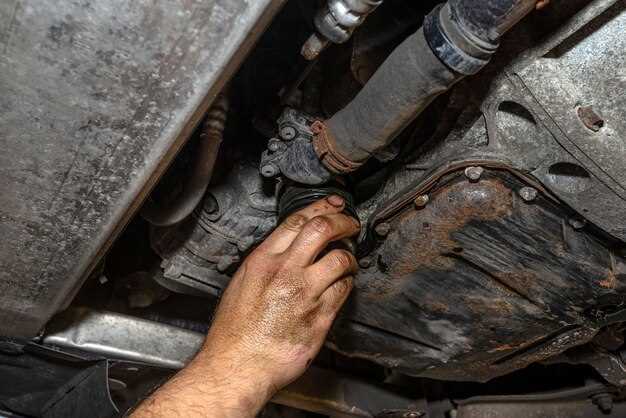
Experiencing a rough idle can be a frustrating issue for Ford car and truck owners. This common problem not only affects the smoothness of your vehicle’s operation but can also indicate underlying mechanical issues that may lead to more serious complications if not addressed promptly. Understanding the causes of idle issues is essential in maintaining the performance and longevity of your Ford vehicle.
The idle RPM of your engine should remain steady when the vehicle is in a stationary position. A rough idle manifests as vibration or shaking, which can be caused by various factors including fuel delivery problems, ignition system failures, or even vacuum leaks. It’s crucial to diagnose the specific cause of the idle issue to implement the appropriate fix.
In this article, we will explore common causes of rough idle in Ford cars and trucks, as well as provide practical solutions to resolve these issues effectively. By addressing rough idle problems promptly, you not only enhance your driving experience but also prevent potential damage to your vehicle’s engine and related systems.
Identifying Common Symptoms of Rough Idle in Ford Vehicles

Rough idle in Ford vehicles is a common issue that can lead to various performance problems if not addressed promptly. The symptoms of rough idle can manifest in different ways, making it crucial for owners to recognize these signs early on. One of the most noticeable symptoms is a fluctuating engine RPM. When the engine is idling, you may observe the tachometer needle moving erratically, which indicates that the engine is struggling to maintain a consistent idle speed.
Another common symptom is an uneven or shaky sensation felt inside the vehicle. This occurs when the engine fails to provide smooth power delivery at idle, leading to vibrations that can be felt through the steering wheel and seats. Additionally, a rough idle often accompanies unusual sounds from the engine compartment. These can include misfiring noises or a pronounced engine stutter, which can indicate deeper issues within the engine or fuel system.
Fuel efficiency may also decline as a result of rough idle. Drivers may notice increased fuel consumption, which can happen due to improper combustion or inadequate fuel delivery caused by the underlying issue. In some cases, dashboard warning lights, such as the Check Engine light, may illuminate, signaling that the engine management system has detected a problem related to the engine or its components.
Furthermore, owners should pay attention to any hesitation or stalling when accelerating from a stop. This can be a direct consequence of rough idling, signaling that the engine is not responding effectively. By recognizing these common symptoms, Ford vehicle owners can take proactive steps to diagnose and resolve rough idle issues before they escalate into more significant problems.
Troubleshooting Causes of Rough Idle: Step-by-Step Guide

Experiencing a rough idle in your Ford vehicle can be frustrating. It’s essential to identify the root causes to restore smooth engine performance. Follow this step-by-step guide to troubleshoot the issue effectively.
Step 1: Check for Diagnostic Trouble Codes (DTC)
Utilize an OBD-II scanner to retrieve any trouble codes stored in the engine’s computer. These codes can provide valuable insights into potential issues affecting the idle quality. Pay close attention to codes related to fuel delivery, ignition systems, or air intake.
Step 2: Inspect Spark Plugs and Wires
Worn or fouled spark plugs can lead to misfires, which may cause a rough idle. Remove the spark plugs to examine their condition. Replace any plugs that show signs of wear or carbon buildup. Additionally, inspect the ignition wires for damage or corrosion.
Step 3: Examine the Air Intake System
A clogged or dirty air filter can restrict airflow to the engine, resulting in an unstable idle. Check the air filter and replace it if necessary. Also, inspect the mass air flow (MAF) sensor for dirt or malfunctions, as it plays a crucial role in determining the correct air-fuel mixture.
Step 4: Evaluate Fuel System Components
The fuel system must deliver the correct amount of fuel for optimal combustion. Check the fuel pump pressure to ensure it meets the manufacturer’s specifications. Inspect the fuel filter for clogs and consider cleaning or replacing the fuel injectors if they are dirty.
Step 5: Investigate the Vacuum Leaks
A vacuum leak can disrupt the air-fuel mixture, leading to rough idling. Visually inspect vacuum hoses for cracks or disconnections. Use a smoke test or spray a flammable substance around hoses to identify leaks during idle.
Step 6: Assess Engine Mounts
Worn or damaged engine mounts can cause excessive vibrations, making the idle feel rough. Inspect the mounts for signs of wear and replace them if necessary to ensure the engine is securely held in place.
Step 7: Check for Software Updates
Manufacturers often release software updates that can enhance engine performance. Visit your Ford dealer to check if there are any updates available for your vehicle’s engine control module (ECM) that could address the idle issues.
By methodically following these steps, you can identify and resolve the causes of a rough idle in your Ford car or truck, leading to a smoother driving experience.
Recommended Repairs and Maintenance for Idle Stability
Ensuring optimal idle stability in Ford cars and trucks requires a combination of proactive maintenance and timely repairs. The engine is a complex system, and maintaining its various components is essential for a smooth idle.
One critical area to focus on is the throttle body. Cleaning the throttle body removes carbon buildup that can disrupt airflow, leading to rough idle conditions. Regular cleaning can prevent stale air and fuel mixtures, which negatively affect engine performance.
Another important aspect is the idle air control (IAC) valve. This component regulates the engine’s idle speed by controlling the airflow when the throttle is closed. A malfunctioning IAC valve can lead to erratic or unstable idle behavior. Replacing a faulty IAC valve can restore proper idle performance.
Fuel injectors also play a significant role in maintaining engine idle stability. Clogged or dirty injectors can disrupt the fuel delivery process, causing the engine to idle roughly. Using a fuel injector cleaner periodically or replacing them when necessary helps ensure a consistent fuel supply.
Additionally, the ignition system must not be overlooked. Worn spark plugs, ignition coils, or damaged wires can lead to misfires, which often manifest as uneven idling. Regular inspection and replacement of these components are vital for smooth engine operation.
Lastly, inspecting vacuum hoses for leaks is crucial. Damaged or disconnected hoses can cause excessive air to enter the engine, throwing off the ideal air-fuel mixture and resulting in idle instability. Replacing any faulty hoses can significantly enhance engine performance.
By addressing these key areas–cleaning the throttle body, servicing the idle air control valve, maintaining fuel injectors, ensuring the integrity of the ignition system, and checking vacuum hoses–you can improve idle stability and enhance the overall performance of your Ford vehicle.



